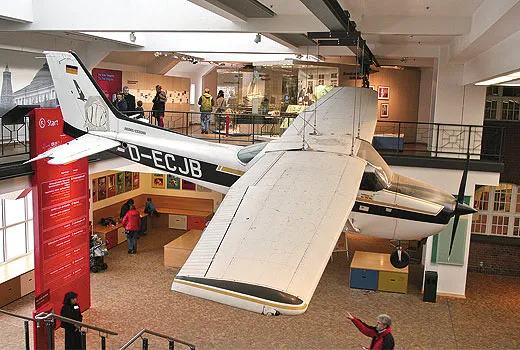Moments and Milestones: The Bridge Builder
Twenty-five years ago, Mathias Rust decided to personally intervene in the cold war
/https://tf-cmsv2-smithsonianmag-media.s3.amazonaws.com/filer/Moments-and-Milestones-9-1-2012-1_FLASH.jpg)
May 28, 1987, turned out to be a bad day for two of the most senior members of the Soviet Union’s military. The reputedly impregnable air defenses that ringed Moscow had been breached, a disaster for Marshal Sergei Leonidovich Sokolov, the minister of defense responsible for those defenses, and Alexander Ivanovich Koldunov, chief marshal of aviation. And all that happened was a kid had landed his rented Cessna 172 on a bridge near Red Square, then blithely taxied to its center and parked next to St. Basil’s Cathedral.
The kid was Mathias Rust, a 19-year-old West German and a new pilot with about 50 hours in his logbook when he came up with the idea of personally intervening in the cold war. In this magazine’s June/July 2005 issue, author Tom LeCompte described Rust’s thought process:
“Rust decided he must do something—something big. He settled on the idea of building an ‘imaginary bridge’ by flying to Moscow. If he could reach the Soviet capital, if he could ‘pass through the Iron Curtain without being intercepted, it would show that [Soviet leader Mikhail] Gorbachev was serious about new relations with the West,’ says Rust.… Rust also prepared a 20-page manifesto he planned to deliver to Gorbachev on how to advance world peace.”
As LeCompte noted, Europeans believed that Gorbachev’s taking the helm of the Soviet Union promised a possible end to years of cold war terror. In any exchange of nuclear weapons between east and west, Germans believed they would be the ones annihilated. But when a meeting between Gorbachev and U.S. President Ronald Reagan came to naught, Rust went into action.
In 1983, Korean Airlines Flight 007 had erred from its flight route, and while it was flying over the Kamchatka Peninsula, the Soviets shot it down. Despite that, Rust thought his chances of reaching Moscow were about even. His flying club had a Skyhawk with tanks that provided a total range of about 750 miles, and he decided on a test run to Reykjavik, Iceland (also the site of the failed Gorbachev-Reagan talks), to assure himself he had the range to reach Moscow. The overwater flight was no small feat for a novice pilot, but after he made it easily, he felt confident the airplane could do what he intended.
On May 25, Rust made it to Helsinki, from which he planned to make the big leap to Moscow. He filed for Stockholm, Sweden, on May 28 and departed westbound. Once free of controlled airspace, he turned over the Gulf of Finland and headed east. Finnish radar picked him up, then the Latvians, who alerted a missile base. Soviet interceptors identified his Skyhawk as a similar-appearing Yak-12 and ignored him. A supersonic MiG-23 slowed to scrutinize the little aircraft, but when the pilot reported it, his commander ignored the sighting.
Confusion, a low cloud deck—and the inability of Soviet officers to believe what was happening—all conspired to allow Rust to achieve his goal: He landed just before 7 p.m., signed some autographs, and waited. He was finally arrested and charged, then jailed, but released well before his four-year sentence was up. Today, 25 years after his famous flight, he is working as a banker.
Without knowing it, Rust enabled the new Soviet leader to consolidate his grip on power. As the general secretary of the Communist party, Gorbachev was able to fire Sokolov and Koldunov, who had been opposing him. So in his way, Rust succeeded in his quixotic bridge building: In 1988, a newly empowered Gorbachev did forge an arms-reduction agreement with Reagan. As for Rust, he never flew an airplane again.
